Here are some of the books I’ve read, and some brief thoughts. If you are looking to expand your mind, I recommend you check these out.

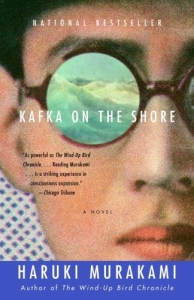 You get used to Murakami. You get to know him through his writings. I almost prefer this to Wind-Up Bird. I don’t know all the reasons why, but I do. Perhaps it is the way he writes of routine, challenging the self, and then there’s the fantastical cat man. The classical music motifs help. I feel like I connect with Murakami as a person because his themes (through and despite vivid imaginings) touch the part of self that asks, “What details do I need to cover daily in my personal life to be an interesting, achieving or strong person?”
You get used to Murakami. You get to know him through his writings. I almost prefer this to Wind-Up Bird. I don’t know all the reasons why, but I do. Perhaps it is the way he writes of routine, challenging the self, and then there’s the fantastical cat man. The classical music motifs help. I feel like I connect with Murakami as a person because his themes (through and despite vivid imaginings) touch the part of self that asks, “What details do I need to cover daily in my personal life to be an interesting, achieving or strong person?”

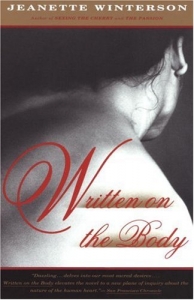 If you want to read what it’s like to be in love, read this. While there are some disagreeable parts to this book, it is perfectly beautiful. Being able to outline and know every part of your lover’s body. To put your thoughts/feelings in words. To draw the words like a map or guide to understanding.
If you want to read what it’s like to be in love, read this. While there are some disagreeable parts to this book, it is perfectly beautiful. Being able to outline and know every part of your lover’s body. To put your thoughts/feelings in words. To draw the words like a map or guide to understanding.
This is not a girly book, although it looks like one. It is not a romance novel. This breaks the stereotypes of what being in love means.

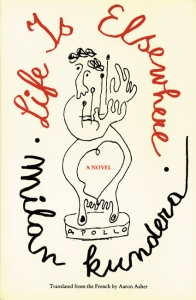 This is one of my favorites of Kundera’s works. Sometimes, I think it is my favorite. I watch Jaromil grow up. I see why he thinks of himself as special because he draws people with dog heads. Adults think his illustrations are brilliant, and from such a young mind. But, he did it because he couldn’t draw people heads. He grows up thinking of himself as especially gifted. And then there’s youth. When he lives up to ideals and extremes. Kundera is excellent at making all of his characters relatable.
This is one of my favorites of Kundera’s works. Sometimes, I think it is my favorite. I watch Jaromil grow up. I see why he thinks of himself as special because he draws people with dog heads. Adults think his illustrations are brilliant, and from such a young mind. But, he did it because he couldn’t draw people heads. He grows up thinking of himself as especially gifted. And then there’s youth. When he lives up to ideals and extremes. Kundera is excellent at making all of his characters relatable.

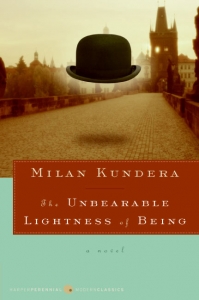 If you know me, I’ve probably given you a copy of this book. Or, at least you know to equate it with me. This has been one of the most affecting books of my life. Kundera’s abilities move me. I could talk about this book for days. The symbolism. The code. I once deconstructed this book, like I’d deconstruct a car, only to put it back together again. This book isn’t focused on plot, not that it’s a bad one. The more Kundera I read, the more admiration I had for his mind and skills. The more I see his words all over my life.
If you know me, I’ve probably given you a copy of this book. Or, at least you know to equate it with me. This has been one of the most affecting books of my life. Kundera’s abilities move me. I could talk about this book for days. The symbolism. The code. I once deconstructed this book, like I’d deconstruct a car, only to put it back together again. This book isn’t focused on plot, not that it’s a bad one. The more Kundera I read, the more admiration I had for his mind and skills. The more I see his words all over my life.

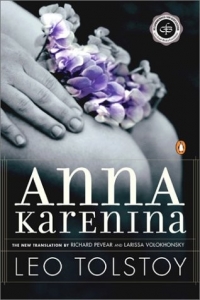
Tolstoy is brilliant. This book will warm your heart, feed your soul and make you think. This is one of those “shift your reality” books for me. Nobility versus emotions. (I was stuck on that thought for a whole summer.) Work versus laziness. (That one made me crave focus.) Community versus the individual. (Even Tolstoy doesn’t know what he thinks about that.) I remember walking around my city with my nose in this book, reading a hundred pages at a time.

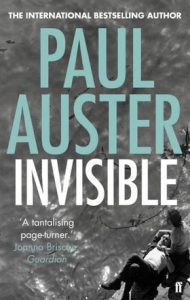 HIGHLY recommended. I am opposed to authors who praise immoral ideas, and the people who find understanding or valor in their attempts to articulate and yield understanding. I hate Lolita, just like I hate the thought of justifying actions we know are wrong just because they become understandable. This book features incest, but because it was Auster, I never batted an eye. He writes well, without condoning “beastly” behaviors, and this book completely sucked me in. His writing so easily entangles me.
HIGHLY recommended. I am opposed to authors who praise immoral ideas, and the people who find understanding or valor in their attempts to articulate and yield understanding. I hate Lolita, just like I hate the thought of justifying actions we know are wrong just because they become understandable. This book features incest, but because it was Auster, I never batted an eye. He writes well, without condoning “beastly” behaviors, and this book completely sucked me in. His writing so easily entangles me.

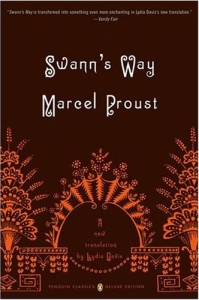 I read this once because he was Proust, and I had to know what the fuss was about. I read it again to be reminded what it is about Proust that can be so well-put. His writing is articulate; the passé becomes emotive and scorned feelings become relatable. Swann falls in love. Swann falls hopelessly in love. We get to see what that falling in love looks like, what he looks like to make himself so vulnerable.
I read this once because he was Proust, and I had to know what the fuss was about. I read it again to be reminded what it is about Proust that can be so well-put. His writing is articulate; the passé becomes emotive and scorned feelings become relatable. Swann falls in love. Swann falls hopelessly in love. We get to see what that falling in love looks like, what he looks like to make himself so vulnerable.

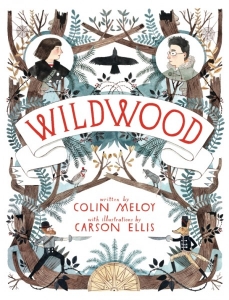 Wildwood is a darling story told by The Decemberists’ lead singer. It reads like his lyrics, and as you can imagine, the story gets pretty cute. With talking owls and coyotes in little soldier uniforms, I would become entranced with the idea of it all. Pure imaginings. I would like for my children to read this. The Portlandic allusions aren’t a bad touch either.
Wildwood is a darling story told by The Decemberists’ lead singer. It reads like his lyrics, and as you can imagine, the story gets pretty cute. With talking owls and coyotes in little soldier uniforms, I would become entranced with the idea of it all. Pure imaginings. I would like for my children to read this. The Portlandic allusions aren’t a bad touch either.

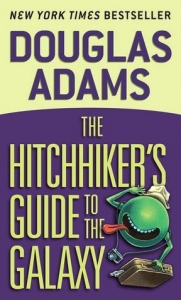 Easy and fun read. After several post-Hobbit “I told you so” lashings, I read this without much hesitation. There are jokes/exaggerations/ all over this thing. Descriptions are drenched in satire. The fact that the mice have been in control all along is incredibly charming.
Easy and fun read. After several post-Hobbit “I told you so” lashings, I read this without much hesitation. There are jokes/exaggerations/ all over this thing. Descriptions are drenched in satire. The fact that the mice have been in control all along is incredibly charming.

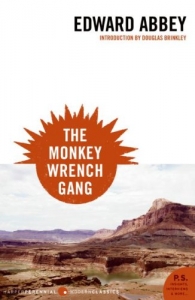 This book is fun. Want to stop the government from building a highway through your town’s forest? Put sand in the bulldozer gas tanks. Want to keep your undeveloped land bridge free? Wait till they spend the money, and blow it up! Get some great environmental activism tips from this fiction work, and follow The Monkey Wrench Gang as they practice what they preach.
This book is fun. Want to stop the government from building a highway through your town’s forest? Put sand in the bulldozer gas tanks. Want to keep your undeveloped land bridge free? Wait till they spend the money, and blow it up! Get some great environmental activism tips from this fiction work, and follow The Monkey Wrench Gang as they practice what they preach.

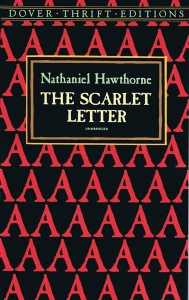 Hawthorne’s writing heavily descriptive and symbol-filled. No matter your age (even if you skipped it in high school), I recommend you read this book. It’s a quick read, contributes toward countless pop-culture references, and still makes a person think about the power of judgment and truth. With so many hidden lies, it’s astonishing we can still point the finger and brand a person for the same sins we ourselves commit. Human nature, of course, but it certainly leaves an excess of pride. The people who call themselves good and silently justify every wrong, detaching themselves from their negative actions. The Scarlett Letter is timeless.
Hawthorne’s writing heavily descriptive and symbol-filled. No matter your age (even if you skipped it in high school), I recommend you read this book. It’s a quick read, contributes toward countless pop-culture references, and still makes a person think about the power of judgment and truth. With so many hidden lies, it’s astonishing we can still point the finger and brand a person for the same sins we ourselves commit. Human nature, of course, but it certainly leaves an excess of pride. The people who call themselves good and silently justify every wrong, detaching themselves from their negative actions. The Scarlett Letter is timeless.

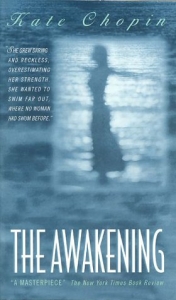 At the time, the ending to this book didn’t bother me. Now it does. I read The Awakening alongside The Scarlett Letter. They opened my mind toward pushing against “societal conventions,” a common theme of the time and my younger self (which individually still exists, but in a different form).
At the time, the ending to this book didn’t bother me. Now it does. I read The Awakening alongside The Scarlett Letter. They opened my mind toward pushing against “societal conventions,” a common theme of the time and my younger self (which individually still exists, but in a different form).

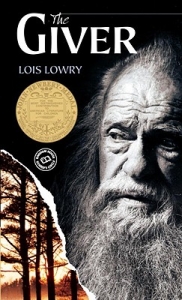 This is one I hope every elementary school child has the opportunity to read. I tried to give it to my small sister, who apparently only likes to read books like Diary of a Wimpy kid. I have the feeling this generation will be “over” reading, which is highly unfortunate for their comprehension/analytical skills, as well as electricity-free enjoyment. This book is a child’s version of Brave New World. It was my favorite book. Even more than Island of the Blue Dolphins.
This is one I hope every elementary school child has the opportunity to read. I tried to give it to my small sister, who apparently only likes to read books like Diary of a Wimpy kid. I have the feeling this generation will be “over” reading, which is highly unfortunate for their comprehension/analytical skills, as well as electricity-free enjoyment. This book is a child’s version of Brave New World. It was my favorite book. Even more than Island of the Blue Dolphins.

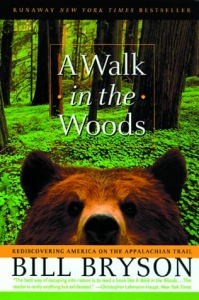 I didn’t read this for the writing. I didn’t read it to change my life. But, I have always been curious about hiking the AT straight through, and this guy put an end to that. The visions of trees like legs, the tree after tree after tree hoping for a change of scenery and the snicker bar nutrition plan don’t really strike my fancy. Bryson did a great job explaining what it’s like to make it straight through “a lot of the way” on the AT.
I didn’t read this for the writing. I didn’t read it to change my life. But, I have always been curious about hiking the AT straight through, and this guy put an end to that. The visions of trees like legs, the tree after tree after tree hoping for a change of scenery and the snicker bar nutrition plan don’t really strike my fancy. Bryson did a great job explaining what it’s like to make it straight through “a lot of the way” on the AT.

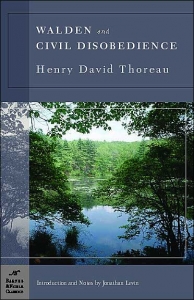 To me, this book was over-hyped. Thoreau’s writing is too self-satisfying for me to have found more substance than I did. Thoreau has come to be synonymous with country living, quiet living, a life apart from society. Young people read this to feed (and grow) that need, but this guy just isn’t much to me. He doesn’t really represent sustainability, separation from society or genius. Maybe it’s that I know too many people like this, and the characteristics just bother me…
To me, this book was over-hyped. Thoreau’s writing is too self-satisfying for me to have found more substance than I did. Thoreau has come to be synonymous with country living, quiet living, a life apart from society. Young people read this to feed (and grow) that need, but this guy just isn’t much to me. He doesn’t really represent sustainability, separation from society or genius. Maybe it’s that I know too many people like this, and the characteristics just bother me…

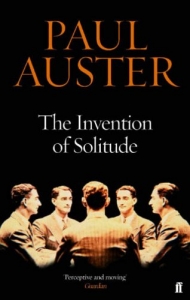 This memoir has two parts. The first is Auster looking back at his relationship with his now-dead father. He tries to come to terms with his father’s death. The father had always been detached, and Auster never really connected. This half shows Auster’s deep need to salvage his father’s past. Ultimately, his father’s distance helped Auster know how he didn’t want to end up, and he makes a deliberate choice not to be that way toward his son. It’s a a deeply probing and heartfelt section.
This memoir has two parts. The first is Auster looking back at his relationship with his now-dead father. He tries to come to terms with his father’s death. The father had always been detached, and Auster never really connected. This half shows Auster’s deep need to salvage his father’s past. Ultimately, his father’s distance helped Auster know how he didn’t want to end up, and he makes a deliberate choice not to be that way toward his son. It’s a a deeply probing and heartfelt section.
In the second half, Auster talks about his inner life. His thoughts on solitude, life, death, happiness. I understand Auster. He values the inner life, and it’s effect on how a person lives a more public facing life. He values earnest reflection and creating the life you live now. I appreciate his sincerity.

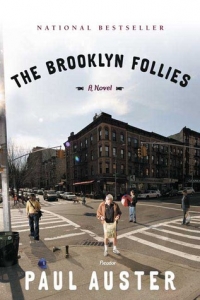 Get to know Auster through fiction. The Hotel Existence. Finding peace now. The emphasis on “looking back.” Adapting your current life based on the image you imagine having later. What is your story? Are there pieces you are missing? That you don’t take the time to realize? “All men’s miseries derive from not being able to sit in a quiet room alone.” -Blaine Pascal This is one of my favorite fiction pieces.
Get to know Auster through fiction. The Hotel Existence. Finding peace now. The emphasis on “looking back.” Adapting your current life based on the image you imagine having later. What is your story? Are there pieces you are missing? That you don’t take the time to realize? “All men’s miseries derive from not being able to sit in a quiet room alone.” -Blaine Pascal This is one of my favorite fiction pieces.

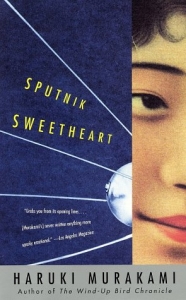 This book is enchanting. It’s about love, loneliness and connection. The participants watch their stories from afar, sometimes with binoculars on a ferris wheel. I remember becoming so drawn into this book. Thinking about it constantly. Getting sucked in. It’s more fantastic than Norwegian Wood. Just beautiful.
This book is enchanting. It’s about love, loneliness and connection. The participants watch their stories from afar, sometimes with binoculars on a ferris wheel. I remember becoming so drawn into this book. Thinking about it constantly. Getting sucked in. It’s more fantastic than Norwegian Wood. Just beautiful.

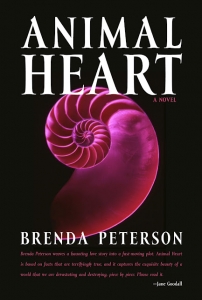
I read this for an Environmental Justice in Literature class. That class made me want to be a forefront writer of the genre. This book fuses environmental activism and fiction. It makes me want to save whales and fall in love while doing it.

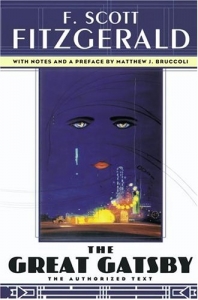 I loved this book for a very long time, but it wasn’t about watching the world in the twenties. Rather, the way Fitzgerald makes his points is like talking to a brilliant friend, whom you already respect, but always takes you by surprise. You do not know where the friend is going at first. You think you do, but you’re not that proud to be assured. Then the friend develops the thought. You listen, as it becomes more and more refined, until the point is completely different than what you expected and indelibly more beautiful. Every word, even the beginning ones, suddenly having meaning of epic proportions and you feel grateful that such a person (“a seer”) exists in the world.
I loved this book for a very long time, but it wasn’t about watching the world in the twenties. Rather, the way Fitzgerald makes his points is like talking to a brilliant friend, whom you already respect, but always takes you by surprise. You do not know where the friend is going at first. You think you do, but you’re not that proud to be assured. Then the friend develops the thought. You listen, as it becomes more and more refined, until the point is completely different than what you expected and indelibly more beautiful. Every word, even the beginning ones, suddenly having meaning of epic proportions and you feel grateful that such a person (“a seer”) exists in the world.

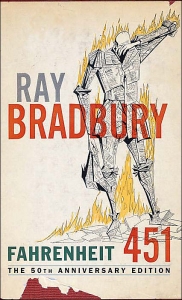 Is this an appropriate book for a sixth grader? Probably not, but I liked it. Parts of it were “strange” to me, but that didn’t mean it didn’t help teach critical thinking skills. It’s books like this, Brave New World, 1984, We, and even The Wave that freak me out. And at the same time, help me see outside of myself toward what may be a very real “big picture.” These shape my political leanings and thought process.
Is this an appropriate book for a sixth grader? Probably not, but I liked it. Parts of it were “strange” to me, but that didn’t mean it didn’t help teach critical thinking skills. It’s books like this, Brave New World, 1984, We, and even The Wave that freak me out. And at the same time, help me see outside of myself toward what may be a very real “big picture.” These shape my political leanings and thought process.

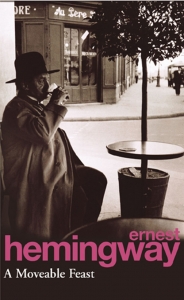 This is a perfect book for learning code. From the outside, A Moveable Feast is about Hemingway’s 1920s Parisian life, with emphasis on his writing, his friends (i.e. Fitzgerald and Stein) and his “self.” Upon deeper reading, you see what influences Hemingway’s views, his vagrant draw toward “worthy” artist-like vices and the justification part of it shows his posturing. “Paris in the twenties, how romantic.” Yes, but here, you the reader have the opportunity to see the real man behind the veil, with just a little bit more attentiveness. Learn to articulate what it means to think of yourself as a genius.
This is a perfect book for learning code. From the outside, A Moveable Feast is about Hemingway’s 1920s Parisian life, with emphasis on his writing, his friends (i.e. Fitzgerald and Stein) and his “self.” Upon deeper reading, you see what influences Hemingway’s views, his vagrant draw toward “worthy” artist-like vices and the justification part of it shows his posturing. “Paris in the twenties, how romantic.” Yes, but here, you the reader have the opportunity to see the real man behind the veil, with just a little bit more attentiveness. Learn to articulate what it means to think of yourself as a genius.

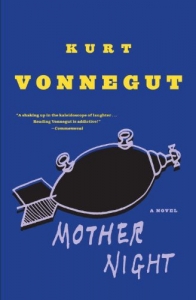 We are what we pretend to be. The world sees Howard, the former-Nazi radio broadcaster, as a Nazi. But, he was really an American spy. And no one will ever/can ever know. Vonnegut is “light” in his approach, but he really cuts away at “appearances” and how we identify ourselves. This book is deeply probing. Enlightening.
We are what we pretend to be. The world sees Howard, the former-Nazi radio broadcaster, as a Nazi. But, he was really an American spy. And no one will ever/can ever know. Vonnegut is “light” in his approach, but he really cuts away at “appearances” and how we identify ourselves. This book is deeply probing. Enlightening.

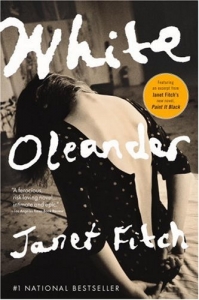 After reading Paint It Black, I read White Oleander. The book far outdid the movie, and it was then I started figuring out how in the world I could meet Ms. Finch, an author who develops her characters without overused cliches and explores themes (i.e. grief) in the context of today’s mental processes. After discovering her job as a professor at USC, I wanted to take one of her classes. For a solid month, Finch’s modern writing inspired me to try and put meeting her into my schedule (through a class or book signing or…anything). While I failed in the short-term, I believe she’s brilliant. And it’s encouraging that she is alive, well and accessible today. (I can’t find Kundera anywhere, and while I’d still love to meet him, it may not be easy/free conversation.)
After reading Paint It Black, I read White Oleander. The book far outdid the movie, and it was then I started figuring out how in the world I could meet Ms. Finch, an author who develops her characters without overused cliches and explores themes (i.e. grief) in the context of today’s mental processes. After discovering her job as a professor at USC, I wanted to take one of her classes. For a solid month, Finch’s modern writing inspired me to try and put meeting her into my schedule (through a class or book signing or…anything). While I failed in the short-term, I believe she’s brilliant. And it’s encouraging that she is alive, well and accessible today. (I can’t find Kundera anywhere, and while I’d still love to meet him, it may not be easy/free conversation.)

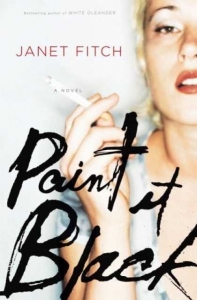 This is about a girl who has to deal with her boyfriend’s suicide. It goes through the grieving, questioning, all that. Finch also shows their little world created together. This stuck with me a bit. The boyfriend was an artist, escaping from Harvard and a wealthy family. He was with Josie, a girl with a hard-enough life. Why was he with her? What did she give him? The desire to fall. To relish in one’s own pride and superiority. Finch develops her themes really well. I loved this book even more than White Oleander.
This is about a girl who has to deal with her boyfriend’s suicide. It goes through the grieving, questioning, all that. Finch also shows their little world created together. This stuck with me a bit. The boyfriend was an artist, escaping from Harvard and a wealthy family. He was with Josie, a girl with a hard-enough life. Why was he with her? What did she give him? The desire to fall. To relish in one’s own pride and superiority. Finch develops her themes really well. I loved this book even more than White Oleander.

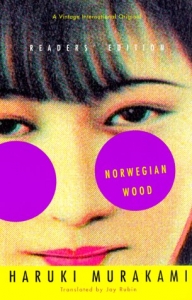 Norwegian Wood was the first Murakami book I read. It is the least “fantastic” (meaning surreal) of all his works, but he still got through to me. The talk of routine (i.e. screw winding 36 times) poignantly sticks with me. And who hasn’t at least known of someone in an unhealthy relationship, where the other person is mentally unstable, and that even adds to the draw (for a time)? This is a coming-of-age book and it’s better than those coming-of-age books without values or virtues.
Norwegian Wood was the first Murakami book I read. It is the least “fantastic” (meaning surreal) of all his works, but he still got through to me. The talk of routine (i.e. screw winding 36 times) poignantly sticks with me. And who hasn’t at least known of someone in an unhealthy relationship, where the other person is mentally unstable, and that even adds to the draw (for a time)? This is a coming-of-age book and it’s better than those coming-of-age books without values or virtues.

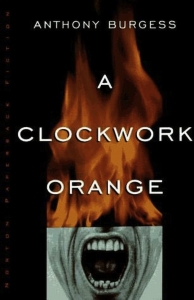 I read the original version of this. There are two, depending on the country where it was published. Or, maybe it was the year? This, like Trainspotting, is told in a special dialect. In this case, Nadsat. Super, very readable/entertaining book. It makes me think of Life Is Elsewhere and The Lyrical Age.
I read the original version of this. There are two, depending on the country where it was published. Or, maybe it was the year? This, like Trainspotting, is told in a special dialect. In this case, Nadsat. Super, very readable/entertaining book. It makes me think of Life Is Elsewhere and The Lyrical Age.

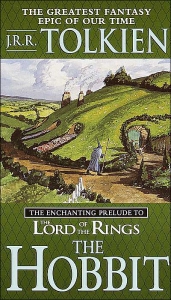 I was recommended this book. I needed a book one day to read at the gym, and was given this one. I started it, felt a little embarrassed, and stopped. I thought it was for kids. Like Harry Potter (I do not mean to offend). Several months later, I was in a 4,000 level Brit Lit class, and there on the syllabus was The Hobbit. What a funny world. I loved it. And had permission to?
I was recommended this book. I needed a book one day to read at the gym, and was given this one. I started it, felt a little embarrassed, and stopped. I thought it was for kids. Like Harry Potter (I do not mean to offend). Several months later, I was in a 4,000 level Brit Lit class, and there on the syllabus was The Hobbit. What a funny world. I loved it. And had permission to?

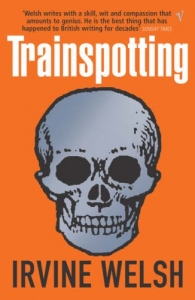 Addiction. In and out. The dialect helps us understand. You’ve probably seen the movie. I prefer the book. I guess that’s saying something. There are all these crazy parts (just as in the movie), except all the pieces flow differently. Many people are obsessed with heroin or opiates today, so it is an interesting look at what it means to experience the ultimate happiness, and being okay upon never getting that back. You read all these scenarios, and you think, “Come on kids,” and at the same time, “Keep the story coming!” This book is mostly interesting due to the way it’s told (language, non-linear style), the different environment and the back and forth aspects of unfamiliar addiction extremes/justifications. I know Tolstoy was a drinker. He’d come home late and write, “I will never do that again. This is the end. This is it.” And you’d see his next entry, “I will never do that again.” And so on.
Addiction. In and out. The dialect helps us understand. You’ve probably seen the movie. I prefer the book. I guess that’s saying something. There are all these crazy parts (just as in the movie), except all the pieces flow differently. Many people are obsessed with heroin or opiates today, so it is an interesting look at what it means to experience the ultimate happiness, and being okay upon never getting that back. You read all these scenarios, and you think, “Come on kids,” and at the same time, “Keep the story coming!” This book is mostly interesting due to the way it’s told (language, non-linear style), the different environment and the back and forth aspects of unfamiliar addiction extremes/justifications. I know Tolstoy was a drinker. He’d come home late and write, “I will never do that again. This is the end. This is it.” And you’d see his next entry, “I will never do that again.” And so on.

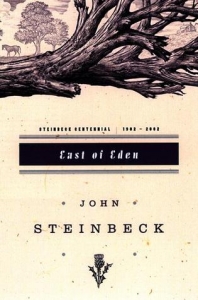 This is all about sin and guilt. Two boys fighting for their father’s attention. Hidden sins, and sins in broad daylight. Cal is “bad.” He knows it. At first he relishes in it. He uses it as his identity. Until he stops identifying with it. And he learns he has choice. Steinbeck is so good. This is real stuff. The descriptions of the Salinas Valley are alluring too.
This is all about sin and guilt. Two boys fighting for their father’s attention. Hidden sins, and sins in broad daylight. Cal is “bad.” He knows it. At first he relishes in it. He uses it as his identity. Until he stops identifying with it. And he learns he has choice. Steinbeck is so good. This is real stuff. The descriptions of the Salinas Valley are alluring too.

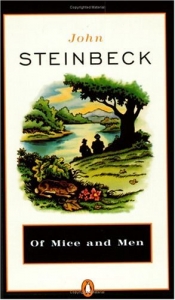 This book was the second book I ever read in 6th grade (after Fahrenheit 451). Lennie made me sad. And the mouse dying in his pocket because he rubbed it too hard. I remember every bit of this book, miraculously. This was one of my earliest, closest encounters with adult subjects. And it was so readable! After I read this, Steinbeck became my favorite author.
This book was the second book I ever read in 6th grade (after Fahrenheit 451). Lennie made me sad. And the mouse dying in his pocket because he rubbed it too hard. I remember every bit of this book, miraculously. This was one of my earliest, closest encounters with adult subjects. And it was so readable! After I read this, Steinbeck became my favorite author.

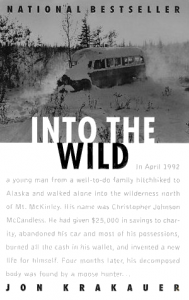 I am pretty sure too many fantasize about doing this. And of course, I lived it. Took too much inspiration from this boy just picking up one day, and taking off. Curiously exploring. Of course, I didn’t die. But, his story did resonate with me. And “move” me.
I am pretty sure too many fantasize about doing this. And of course, I lived it. Took too much inspiration from this boy just picking up one day, and taking off. Curiously exploring. Of course, I didn’t die. But, his story did resonate with me. And “move” me.

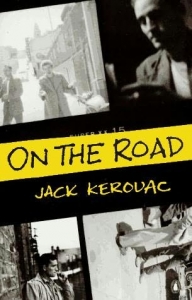 Obligatory reading. It’s all about the journey. East to west to east to west. The beatnik codes are all over this thing. You’ve heard about this book. It has tons of hype. You really cannot understand the beat culture, unless you read On The Road or Naked Lunch or Howl. And to understand all that stuff that just “spurted out of nowhere” in the 60s, there must have been some major influencers, eh?
Obligatory reading. It’s all about the journey. East to west to east to west. The beatnik codes are all over this thing. You’ve heard about this book. It has tons of hype. You really cannot understand the beat culture, unless you read On The Road or Naked Lunch or Howl. And to understand all that stuff that just “spurted out of nowhere” in the 60s, there must have been some major influencers, eh?

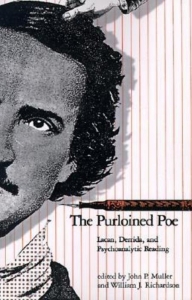 Only read this if you want to learn how to deconstruct prose (and thereby, learn how to look at life differently). This book is long, complex and utterly brilliant. They are essays on one story, Edgar Allen Poe’s The Purloined Letter. There’s Lacan who talks about the “other” (which I think on all the time), Derrida who focuses on grammatology (all the noise in between) and Johnson who says both Derrida and Lacan are doing the same thing in their search for meaning, when meaning comes from “perceived” symbol repetition. If you get this, your life looks different and you think like never before. But if you’re mind is not there, move on to something else.
Only read this if you want to learn how to deconstruct prose (and thereby, learn how to look at life differently). This book is long, complex and utterly brilliant. They are essays on one story, Edgar Allen Poe’s The Purloined Letter. There’s Lacan who talks about the “other” (which I think on all the time), Derrida who focuses on grammatology (all the noise in between) and Johnson who says both Derrida and Lacan are doing the same thing in their search for meaning, when meaning comes from “perceived” symbol repetition. If you get this, your life looks different and you think like never before. But if you’re mind is not there, move on to something else.

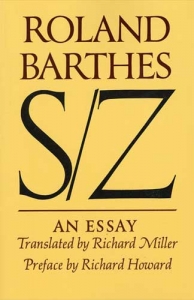 Roland Barthes is a sort-of god (uncapitalized). Not everyone can read this book. In fact, many people who try hate that they tried and it pisses them off. But, for the few and far between, this book is a pathway into this otherworldly understanding of semiotics and code (design for the marketer, the author and (mostly) textual communicator). Understanding S/Z changes reading experiences for the rest of your life. You are not even supposed to read this book front to back! I highly respect this man, and am so grateful for his enlightenment.
Roland Barthes is a sort-of god (uncapitalized). Not everyone can read this book. In fact, many people who try hate that they tried and it pisses them off. But, for the few and far between, this book is a pathway into this otherworldly understanding of semiotics and code (design for the marketer, the author and (mostly) textual communicator). Understanding S/Z changes reading experiences for the rest of your life. You are not even supposed to read this book front to back! I highly respect this man, and am so grateful for his enlightenment.

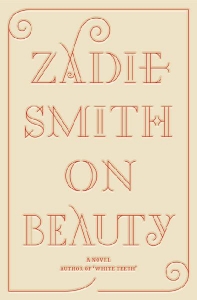 I read this awhile ago and only remember bits and pieces, but I had to post it because I enjoyed reading it so much and Zadie Smith’s “code words” appeal to me. If you like movies like Dead Poet’s Society or Goodwill Hunting (especially for the sake of “academia world”), chances are you will like this.
I read this awhile ago and only remember bits and pieces, but I had to post it because I enjoyed reading it so much and Zadie Smith’s “code words” appeal to me. If you like movies like Dead Poet’s Society or Goodwill Hunting (especially for the sake of “academia world”), chances are you will like this.

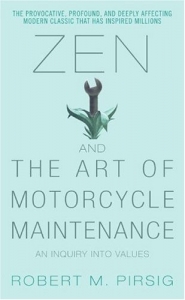 This is the difference between creative and technical people, and how to bridge the gap. Creative people do not like to enter the technical world because it takes different processing, and vice versa. In reality, a person can conquer both sides. Learn how to tackle tasks from start to finish, just by doing them. Instead of having your faucet leak without thinking about it for a month on end, you figure out how to fix it right away. Is quality objective? How can it be? This book gives answers to unanswerable questions in a Kerouac “it’s all about the journey” style.
This is the difference between creative and technical people, and how to bridge the gap. Creative people do not like to enter the technical world because it takes different processing, and vice versa. In reality, a person can conquer both sides. Learn how to tackle tasks from start to finish, just by doing them. Instead of having your faucet leak without thinking about it for a month on end, you figure out how to fix it right away. Is quality objective? How can it be? This book gives answers to unanswerable questions in a Kerouac “it’s all about the journey” style.

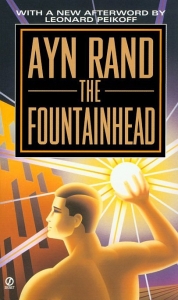 While not as developed as Fountainhead, having dated an architecture major and being so heavily design-oriented, this one gets through in a less-political way than Atlas Shrugged. To me, it highlights functional design, what shapes a person’s judgments of design and how judgments are peer versus practically aligned.
While not as developed as Fountainhead, having dated an architecture major and being so heavily design-oriented, this one gets through in a less-political way than Atlas Shrugged. To me, it highlights functional design, what shapes a person’s judgments of design and how judgments are peer versus practically aligned.

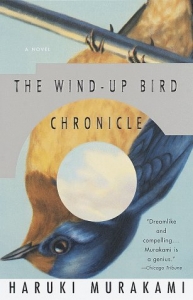 To me, this is an anti-apathy book. It slowly and methodically shows how we are apathetic and learn to disengage. Those almost unidentifiable ways we lose intangible parts of ourselves, and become so disconnected we stop understanding the value of emotion, preference and responsibility. Murakami is older now, but he understands today’s largest and paradoxically most well-hidden struggle.
To me, this is an anti-apathy book. It slowly and methodically shows how we are apathetic and learn to disengage. Those almost unidentifiable ways we lose intangible parts of ourselves, and become so disconnected we stop understanding the value of emotion, preference and responsibility. Murakami is older now, but he understands today’s largest and paradoxically most well-hidden struggle.